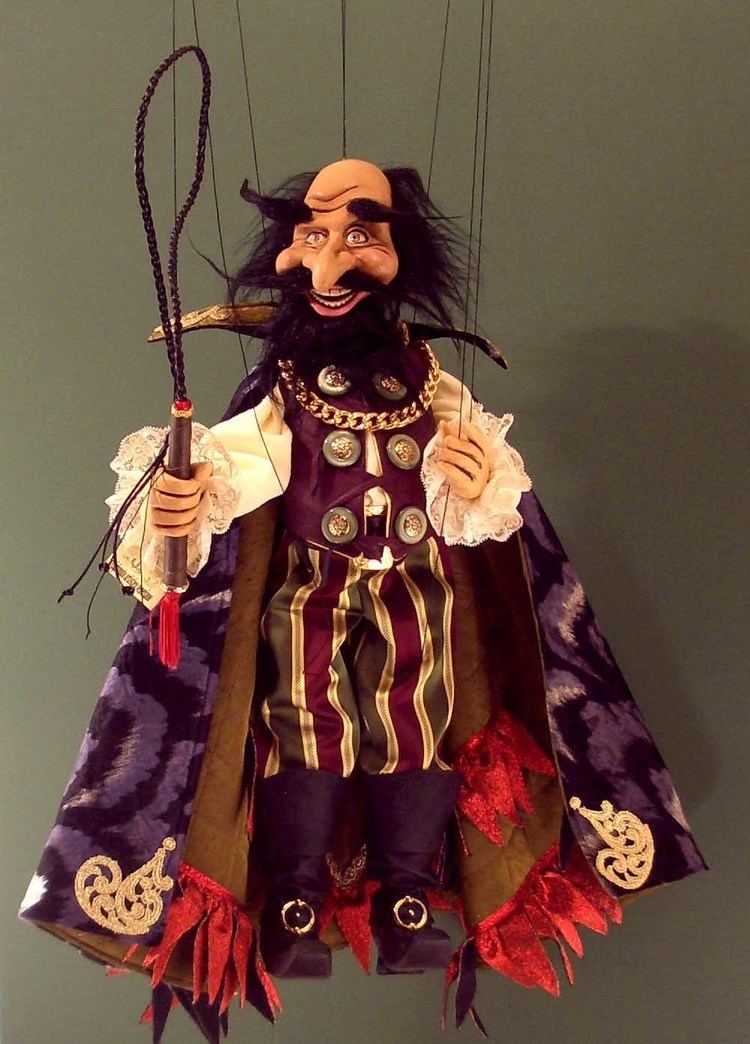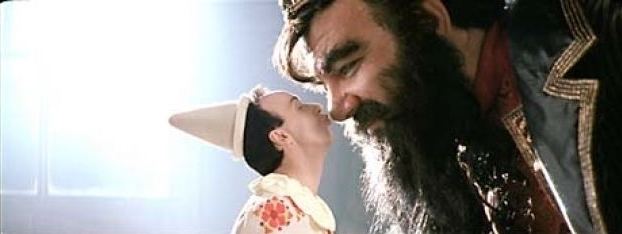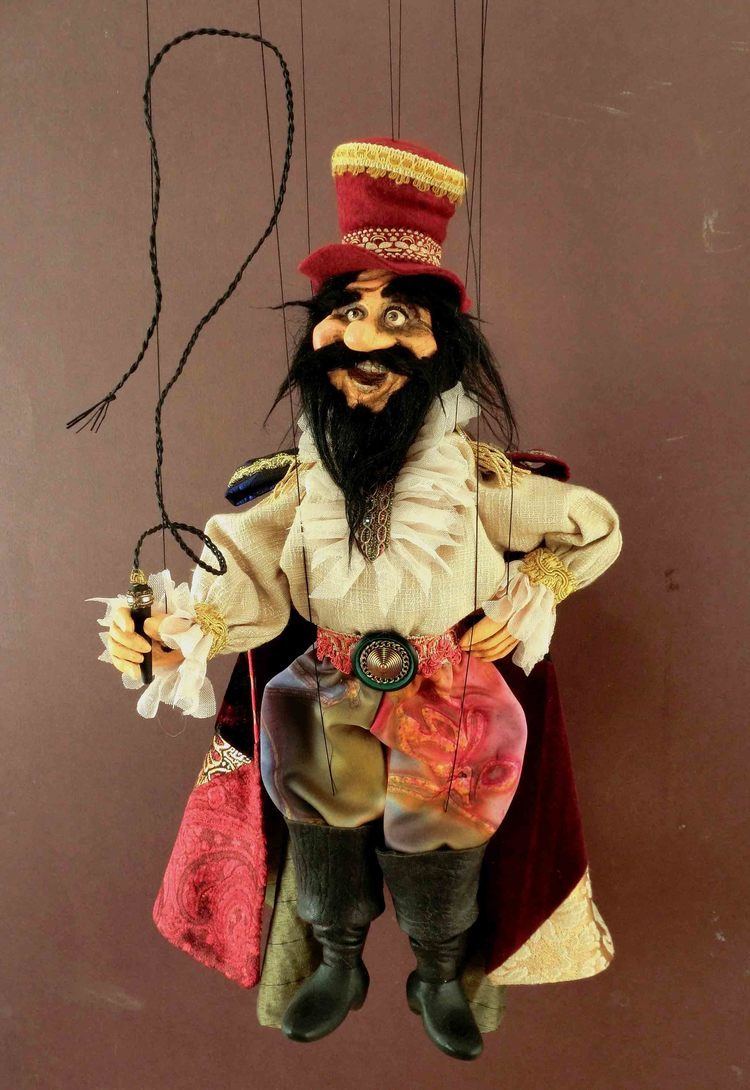Creator Carlo Collodi | ||
 | ||
Played by Similar The Terrible Dogfish, Candlewick (character), Talking Cricket | ||
Mangiafuoco (/ˌmɑːndʒəfuˈoʊkoʊ/ MAHN-jə-foo-OH-koh; [mandʒaˈfwɔːko], literally "Fire-Eater") is the fictional director and puppet master of the Great Marionette Theatre (Gran Teatro dei Burattini), who appears in Carlo Collodi's book The Adventures of Pinocchio (Le avventure di Pinocchio). He is described as "... a large man so ugly, he evoked fear by simply being looked at. He had a beard as black as a smudge of ink and so long that it fell from his chin down to the ground: enough so that when he walked, he stepped on it. His mouth was as wide as an oven, his eyes were like two red tinted lanterns with the light turned on at the back, and with his hands, he sported a large whip made of snakes and fox tails knotted together." Though imposing, Mangiafuoco is portrayed as easily moved to compassion, which he expresses by sneezing.
Contents

Role in the book

Mangiafuoco is first encountered in Chapter X, after Pinocchio ruins one of his puppet shows by distracting the other puppets, and demands that Pinocchio be burned as firewood for his roasting mutton. Moved by Pinocchio's lamentations, Mangiafuoco decides to burn one of his own puppets, Harlequin (Arlecchino), instead. When Pinocchio begs for Harlequin's life and offers to sacrifice himself in Harlequin's stead, he is refused by Mangiafuoco, who upon hearing that he is poor, gives Pinocchio five gold coins, later seized by The Fox and the Cat (Il Gatto e la Volpe).
Disney's Pinocchio (1940)
In the 1940 animated Disney film Pinocchio, Mangiafuoco is renamed Stromboli (in the Italian dub of the film, "Mangiafuoco" is Stromboli's epithet). The character is voiced by Charles Judels (who also voiced The Coachman in the same film), and animated by Bill Tytla. Unlike Mangiafuoco, who meets Pinocchio by chance, Stromboli buys Pinocchio from Honest John and Gideon and earns a great deal of money by showing Pinocchio on stage. Stromboli is at first portrayed as gruff but kind-hearted, but suddenly locks Pinocchio in a cage, stating that once he is too old to work, he will be used as firewood. Pinocchio escapes with the help of the Blue Fairy. Like all the villains in the film, the final fate of Stromboli is never stated, revealed, or implied.

Despite his limited screen time, Stromboli is one of Disney's most infamous and acclaimed villains. The character has been praised by critics for possessing the ability to instill in audiences both laughter and fear. Art critic Pierre Lambert has stated that "Tytla's innate sense of force is revealed in all its magnitude in the creation of the character of Stromboli," and animation historian Charles Solomon refers to the puppet master as "the grandest of all Disney heavies", while John Canemaker describes Stromboli as "an overweight monster of mercurial moods, capable of wine-soaked, garlic-breathed Old World charm one second, and knife-wielding, chop-you-up-for-firewood threats the next". William Paul drew some parallelism that "It is not too difficult to regard Stromboli as burlesque of a Hollywood studio boss, complete with foreign accent. Disney's own relationship to the Hollywood power structure was always a difficult one, and his distrust of the moguls was well justified by his earliest experiences in the industry".

During the premiere of Pinocchio, Frank Thomas sat in front of W.C. Fields, who, upon Stromboli's entrance, muttered to whoever was with him that the puppet master "moves too much". Michael Barrier agrees with Fields' criticism, considering Stromboli a "poorly conceived character" whose "passion has no roots... there is nothing in Stromboli of what could have made him truly terrifying". Leonard Maltin disagrees, considering Pinocchio's encounter with the showman to be the wooden boy's "first taste of the seamy side of life... (Stromboli) tosses his hatchet into the remnants of another ragged marionette, now a pile of splinters and sawdust, a meekly smiling face the only reminder of its former 'life'." Though the character is Italian, characteristics such as Stromboli's facial expressions, obsession with wealth, and long black 'goat's beard' have led some to make comparisons with Jewish stereotypes (particularly Hollywood moguls).
Stromboli has repeatedly denied links to the Italian mafia.
Later portrayals


